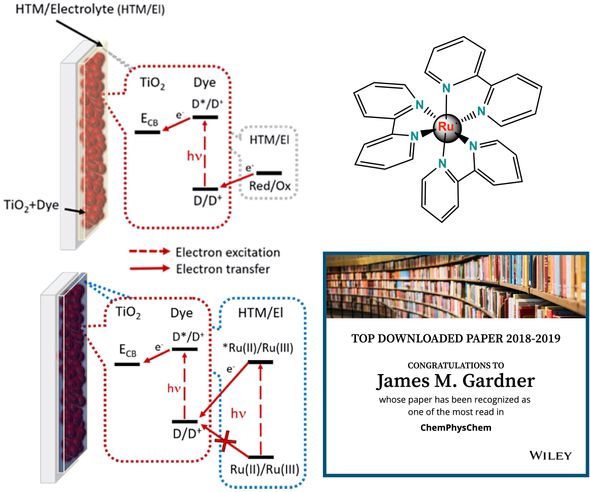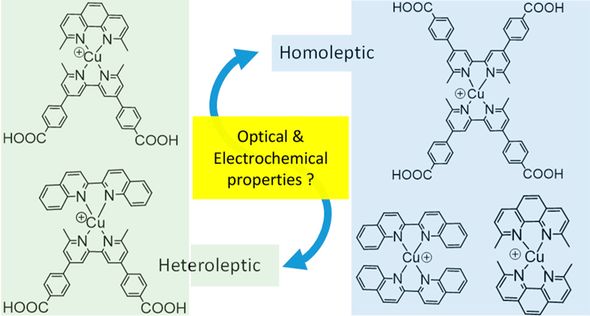James Gardner
Universitetslektor
Detaljer
Forskare
Om mig
James Gardner was born in Long Beach, California in 1982 and grew up in New Orleans, Louisiana. In 2004, he graduated from Tulane University with a joint Bachelor’s degree in Chemistry and Environmental Science. Dr. Gardner graduated with a Ph.D. in Chemistry from The Johns Hopkins University in 2009 under the supervision of Professor Gerald J. Meyer. James’ thesis work focused on the photochemical formation of chemical bonds. For his post-doctoral research at Uppsala University, Dr. Gardner explored interfacial charge transfer by time-resolved spectroscopies. James joined the faculty of KTH in 2012 as the Assistant Professor of Photoelectrochemistry. In 2016, he received the title of Docent and was promoted to tenured Associate Professor. From 2018 to 2024, Dr. Gardner was the Division Head for Applied Physical Chemistry. Those same years, James was Deputy Head of the Center for Molecular Devices (CMD). The CMD is a collaborative research environment between KTH and Uppsala University that focuses on all aspects of emerging solar cell technologies. Dr. Gardner is an editor at the journalsEnergies (2020) andNanoenergy Advances (2022).
My Research
The photochemistry and photophysics of molecules at interfaces have been an overarching research theme. Of particular interest is understanding the energetics, kinetics, and conditions that promote interfacial charge transfer chemistry as this relates to dye-sensitized, quantum dot, and perovskite solar cells.
The Gardner lab has studied the synthesis and photochemistry of metal coordination complexes for use in dye-sensitized solar cells. Recent research interests have focused on copper and ruthenium complexes. Ruthenium complexes are well known for their photostability and tunable redox chemistry and comparatively long-lived excited states. Use of these complexes in real world applications is presently limited by ruthenium’s low elemental abundance and high cost. However, it's unique properties may yield tandem solar cells prepared from strictly molecular materials.
Copper coordination complexes may one day supplant ruthenium complexes as the go-to photochemistry molecules. These molecules have similarly long excited state lifetimes, rely on an abundant metal, and have comparatively direkt syntheses. However, these molecules are hampered by their relative (photo)chemical instability. A deeper understanding of the bonding in copper coordination may lead to more robust molecules and less expensive solar cells.
In the News
Moisture tolerant perovskite solar cells: link
James was awarded the element Tantalum from IUPAC for the Periodic Table of Younger Chemists: link
KTH News:
1) Meeting with KTH's Energy Platform
2) Possible solution to flaw in promising solar material
3) Solar cell performance improves with ion-conducting polymer
Kurser
Analytisk Kemi med statistik (CK1295), lärare | Kurswebb
Analytisk kemi (CK1290), lärare | Kurswebb
Avancerad Oorganisk kemi (CK2020), examinator, kursansvarig | Kurswebb
Batterier (CK2300), lärare | Kurswebb
Batterier (CK206V), lärare | Kurswebb
Examensarbete inom Teknisk kemi, grundnivå (KA103X), assistent | Kurswebb
Examensarbete inom kemi, avancerad nivå (KD200X), examinator | Kurswebb
Examensarbete inom kemiteknik, grundnivå (KH138X), examinator | Kurswebb
Fördjupad oorganisk kemi (FCK3319), examinator, kursansvarig, lärare | Kurswebb
Inledande kemi (KD1020), lärare | Kurswebb
Kemisk jämvikt (CK1285), examinator, kursansvarig, lärare | Kurswebb
Kemisk jämvikt (CK1280), examinator, kursansvarig, lärare | Kurswebb
Materialens kemi och egenskaper (KF1165), lärare | Kurswebb
Projekt i kemi (KD2905), examinator | Kurswebb
Projekt i kemi (KD2910), examinator | Kurswebb

